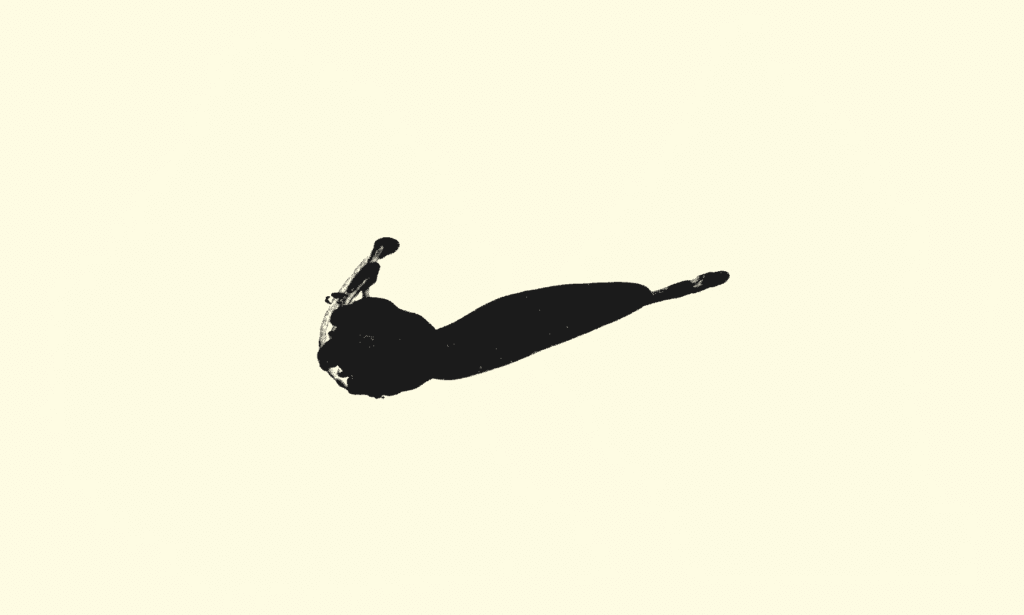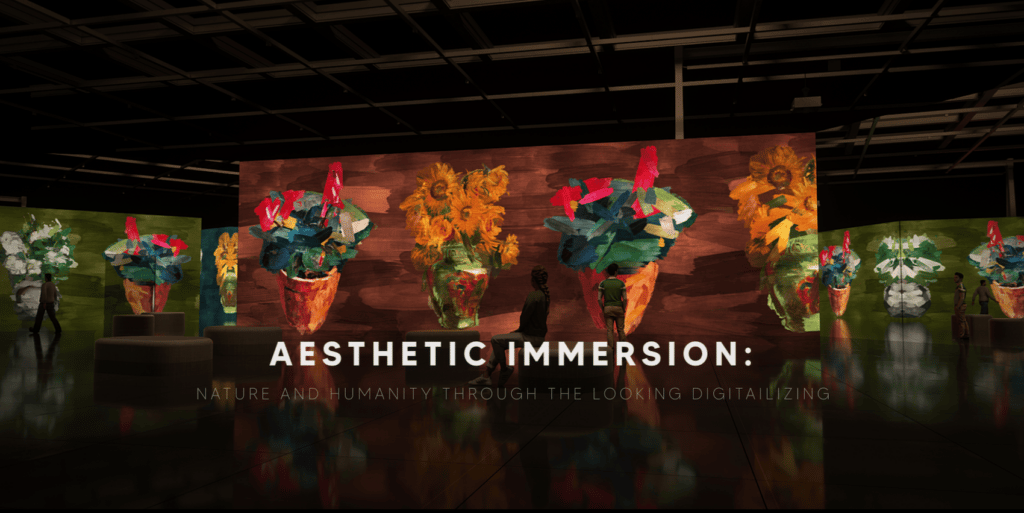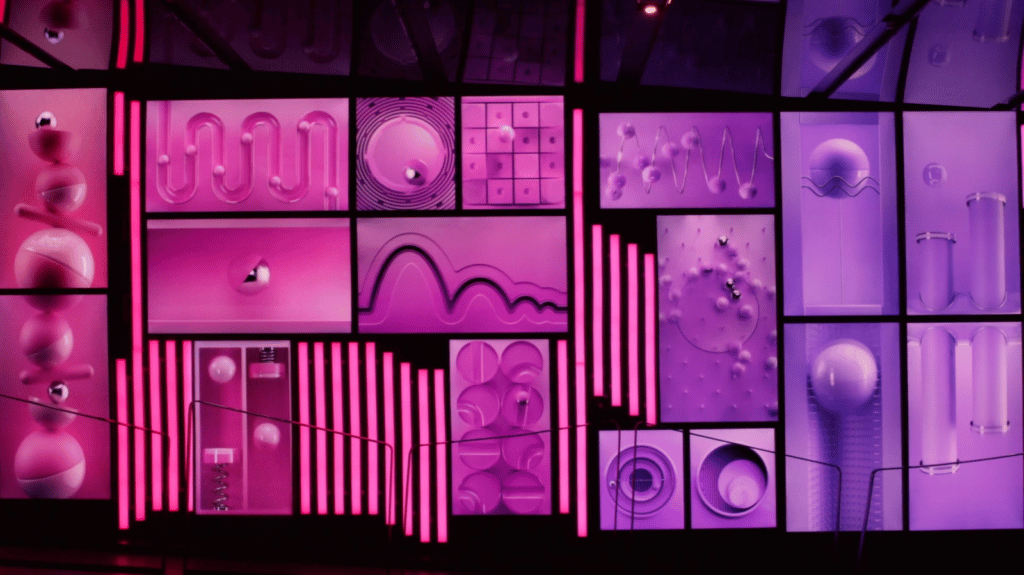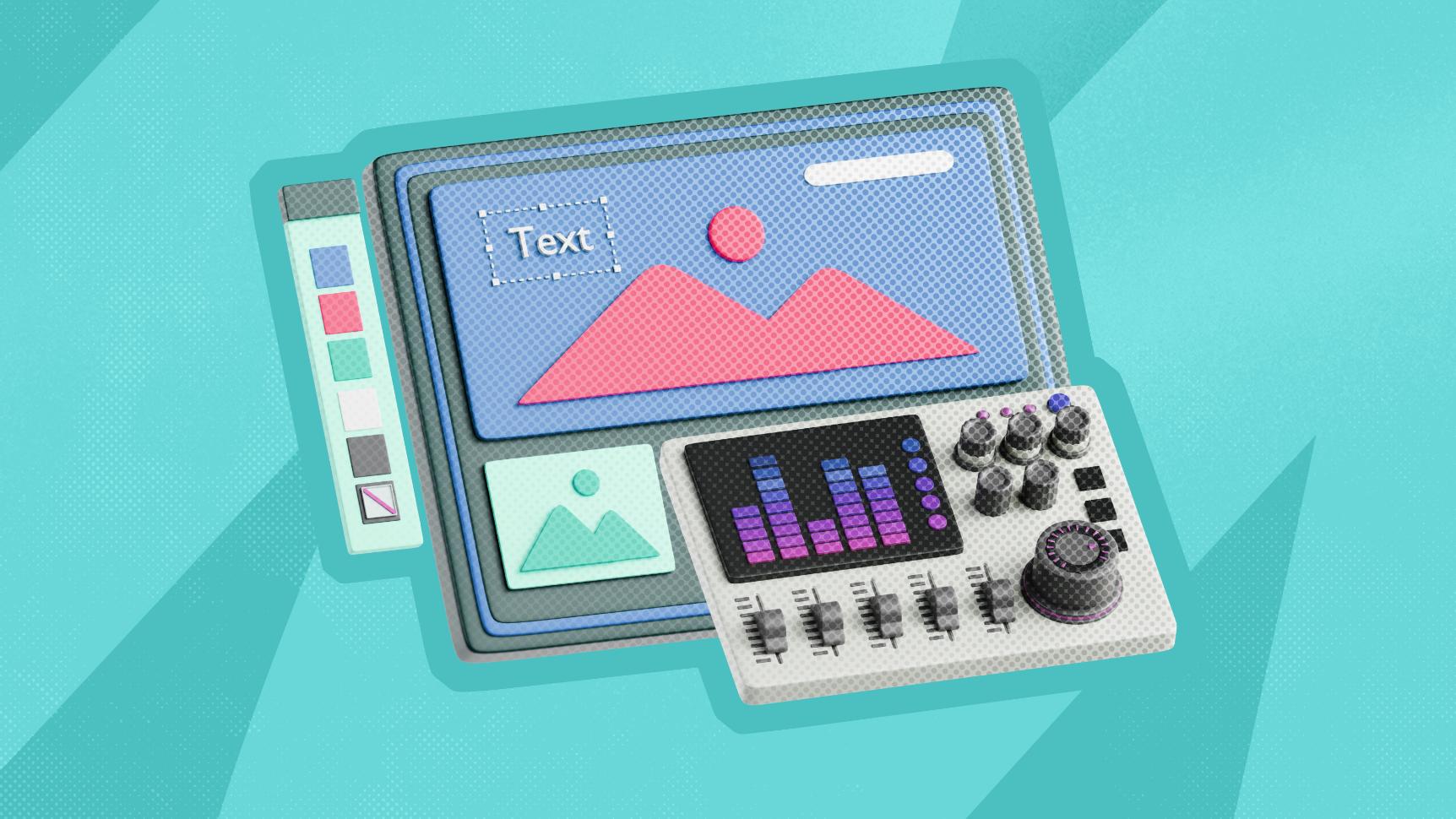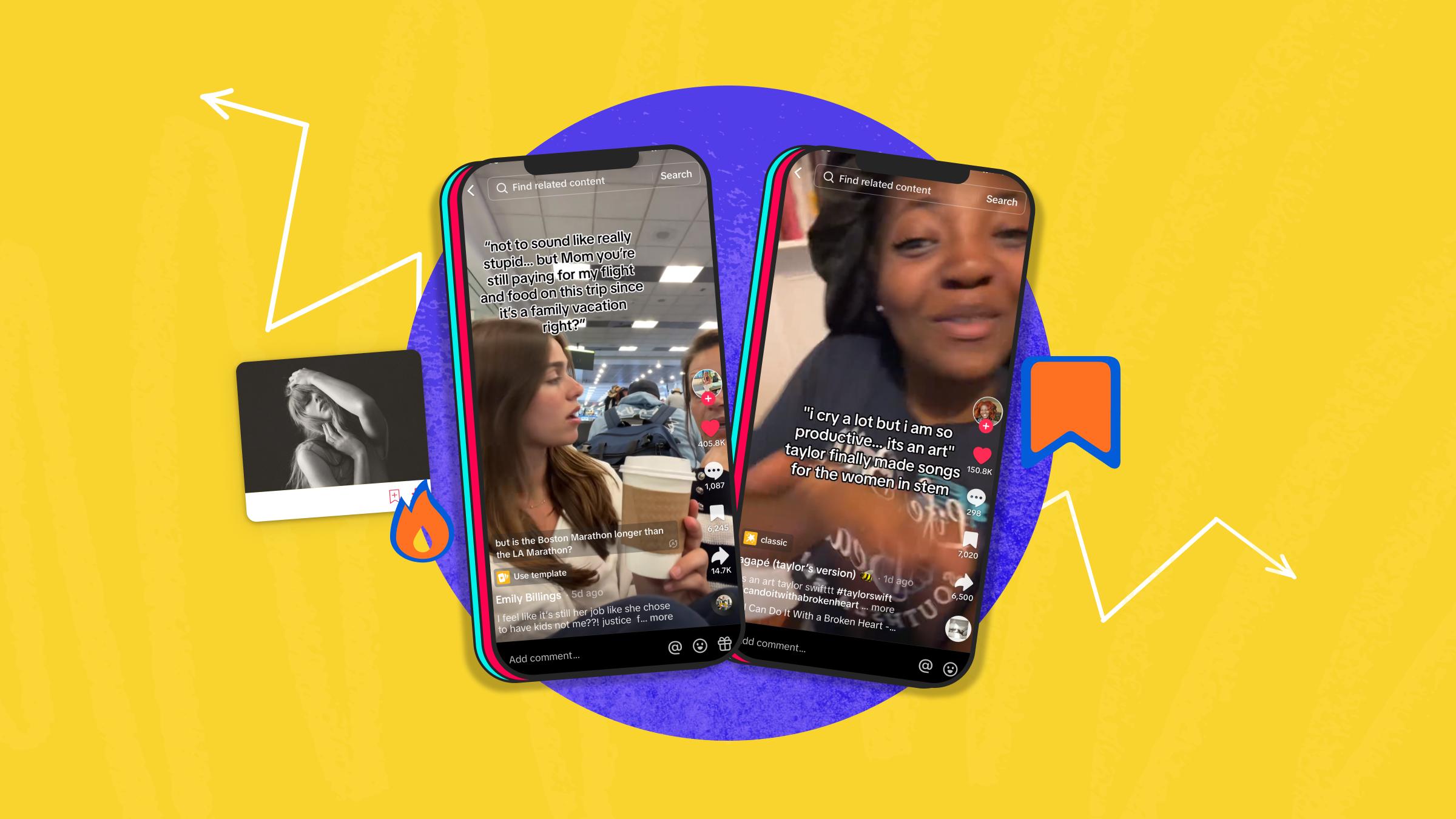Want to know what's trending in motion design for 2024? We’ve compiled the top motion graphics trends predictions for the coming year to help you stay ahead of the curve.

Motion graphics have become integral to digital content creation. From subtle web animations to full-fledged promotional videos, the versatility and innovation of motion graphics can’t be matched.
Motion design is a rapidly evolving field with a constant stream of new techniques, styles, and technologies. And, as we head into 2024, another round of exciting developments promises to transform the industry of motion graphics and the way we approach it.
Whether you’re a seasoned motion designer or just starting your journey with motion graphics, we’ve compiled the top motion design trends predictions for the coming year to help you stay ahead of the curve. From disruptive retro to experimental minimalism, here’s what’s trending in motion graphics for 2024.
1. Hyper-Realism and 3D
This exciting trend enables animators and motion designers to create ultra-realistic scenes that make even the most experienced photographers look twice. The increasing popularity of 3D tools like Unreal Engine 5 and Blender – and a few recently released features – have taken these capabilities to the next level.
“3D has had a huge explosion of popularity over the last few years, with the development of Illustrator’s new 3D tools, accessible tutorials using Blender and Cinema 4D, as well as the new Unreal real-time rendering engine,” says experienced motion designer Julia Chetwood.
For example, look at this behind-the-scenes video, which cuts between a green screen and the finished film to show how to achieve hyper-realistic street scenes and cityscapes using Unreal Engine’s real-time rendering feature.
And then there’s this futuristic landscape created using Blender – it’s so immersive that it looks as if you could walk straight into it. With these tools becoming more widely available, we expect to see 3D grow in popularity, with tutorials and how-to videos exploring what motion designers can achieve with this show-stopping software.
2. Disruptive Retro
Today’s video creators have access to cutting-edge technology, but that hasn’t stopped them from being inspired by retro design styles. Retro has been a massive trend over the last five years, and it’s now making waves in the motion graphics scene.
“Over the last couple of years, we’ve seen that more and more projects have decided to follow a more disruptive retro style,” says Envato video editor Farid Montaño Garduño. “There’s been a big increase in glitches, chromatic aberrations, neon lights, and CRT scanlines across motion graphics.”
Just look at the trailer for recent movie release Spider-Man: Across the Spider-Verse. From punk-style collages to comic-book-style dots, this fast-paced film leads the way with glitches, scanlines, chromatic aberrations, and neon flashes – all of which combine to produce a disruptive effect.
This aesthetic shows no sign of slowing down, with more and more video games and animated series tackling the trend, including Arcane, which overlays the action with gritty, distorted effects and hand-drawn scrawls and scribbles.
3. Pushing the Boundaries of Mixed Media
This motion graphics trend is all about experimenting with new ways to mix media, thanks to tools that make it easier than ever to combine 2D and 3D.
This charming video project – aptly titled The Feelings – uses the trend to explore abstract concepts like emotions in a visually engaging and relatable way.
“We’ll continue to see more 3D animation paired with other techniques and styles to create a mixed media look, beautifully blurring the lines between real life and fantasy worlds,” says Julia. “The merging of a polished 3D style with a handcrafted and sometimes sketchy 2D aesthetic brings together two distinct worlds to create something super engaging and fun.
“I’ve also seen a rise of animators and artists using 3D animation in the early stages of animation to help create a realistic style, and then use that almost as a reference to craft something using completely different techniques.”
Big brands are also getting in on the action. Nike celebrated its 50th birthday with a collage-like animated short that combines video footage with sketches, newspaper cuttings, and photos. The result is a compelling mixed media look that makes the viewer feel as if they’re moving through the pages of a scrapbook.
This trend embraces a mishmash of approaches, so there are no limits to how to incorporate it into your work. For example, we’re seeing 3D tools used in the early stages of animation to create a realistic style before introducing completely different techniques to make something that jumps off the screen.
“I hope to see more experimentation with new ways you can mix media,” says motion design expert and YouTube sensation Ben Marriott. “There’s always been a mixture of 3D and 2D, but new tools are coming out that will expand our possibilities – and I want to see how far we can push them. For example, Grease Pencil and Blender allow you to mix 2D and 3D more naturally, and Unreal Engine has real-time rendering, which allows more people to experiment and get hands-on in the 3D world. I’m interested to see the new ways that people can experiment with these tools.”
4. Traditional Techniques & Handmade Animation
Illustration and animation have always been a popular pairing. And today, various software tools are making this old-school technique even more accessible for experienced and newbie illustrators and animators alike.
“Illustration and animation have always gone hand in hand – ever since the early days of skilled animators using traditional frame-by-frame techniques to create films for Disney,” says Julia. “Illustrative animation is often character-driven and narrative-based, allowing personality to explode through engaging scenes, and it’s just plain enjoyable to watch. You’re a kid again and watching cartoons, except now they can tackle more adult subject matters and present them in a more refined and trendy aesthetic. With Procreate Dreams launching in November 2023, this will make traditional animation techniques even more accessible, and we’ll see more of this trend.”
Illustrative animations are perfect for storytelling. They can be short and snappy, like Melbourne-based Bel Giles’ bubblegum-chewing cactus, or playful and poetic like Loreta Isac’s work, where dreamy sequences and lyric videos burst with quirky personality. They can communicate anything the animator wants, even transcending the boundaries of kids’ cartoons to tackle more grown-up themes.
In addition to combining technology and traditional techniques, we’re also seeing an increasingly analog approach to creativity. Perhaps it’s a contrast to the instant results of generative AI – like in the painstaking process followed by Bennet Pimpinella, who paints directly onto each frame of a piece of footage.
“Combining digital processes with handmade analog techniques is merging the worlds of technology and craft,” Julia continues. “In an AI-saturated world, where motion design becomes exceedingly easy to learn and almost anyone can create amazing moving things with minimal effort, these techniques celebrate the laborious and time-intensive creative processes of animation that were once such a coveted thing.”
5. Squishy & Textured Objects
Welcome to a terrifically tactile trend that’s taking over social media. It involves using 3D rendering to create objects that look as if they’re being inflated, squished and squeezed – moving in a way you might not expect. Take a look at this example from Timea Balo, where everyday items are manipulated in weird and wonderful ways, abstract shapes get covered in realistic-looking textures and materials, and words and letters take on a life of their own.
“One of the most notable trends I’ve seen is 3D rendering and textures emulating inflatable objects – like balloons or clothes – while forming shapes from abstract figures to letters and everyday objects,” says Envato video editor Gibran Gomez. “This style has become quite mainstream (even used by renowned brands in their ads) due to the feeling it evokes, commonly described as ‘oddly satisfying.’ It often includes flashy colors ranging from vivid pastels to ‘Barbie pink’ to Rosa Mexicano, making it difficult to miss no matter what format it’s presented in.”
The eye-popping colors are hard to miss in this more muted approach to the same trend from Liam Henderson. Against his large-scale settings, a table and chair seemingly melt from solid to liquid in seconds. In another video, a towering robotic arm releases a mass of bouncy blue balls. From shattered surfaces to sinking sunglasses, his motion graphics show what’s possible with this ‘reach-out-and-touch-it’ trend.
6. Experimental Minimalism
Today’s motion graphics designers have access to more amazing tools and software than ever, and – ironically – many are using them to create less. By this, we mean they’re taking a less-is-more approach to increase contrast and give the viewer a chance to focus on what’s happening. This trend can incorporate other influences – like the squishy and textured objects we see crawling, creeping, and combining here – but the idea is to do away with distractions.
“I’d love to see more experimentation with minimalist motion design,” says Ben. “For a long time, the trend has been to display as much animation on screen as possible. And that makes sense – you’ve got a crowded creative feed, so you’ve got to stand out. But I think there will be a tipping point where everything is too maximalist. I’m excited to see motion designs with more breathing room to increase that contrast. I think it will be the way to stand out in the future, and I hope it leads to some interesting creations that aren’t just more, more, more, more.”
Experimental minimalism is dedicated to detail, meaning this trend has various use cases. Take this work by Madrid-based creative studio Kutuko, which uses a minimal color palette and simple shapes to communicate the properties of a new sportswear brand. Instead of hundreds of elements competing for our attention, there are just mesmerizing transitions between the soothing, slow-moving animations.
7. Immersive Experiences
This trend takes the desire to dive into stunning surroundings one step further. Immersive experiences are becoming increasingly popular – as a marketing tool, entertainment, and a way of experiencing art. For example, this installation from the Asia Culture Center in South Korea saw visitors walk around video exhibition halls, dwarfed by dynamic landscapes, swirling brushstrokes, and moving paintings.
The idea is to surround people with sensations that engage all their senses, and we see this trend again at Montreal’s Place des Arts. Here, a luminous and kinetic installation plays with the idea of gravity as visitors enter a lifesize laboratory.
“The rapid rise of immersive video installations has been impossible to ignore,” says Envato Senior Video Producer, Eduardo Flores. “These types of exhibitions have been popping up all around the world in which motion artists and designers have been using new technologies to redefine the way in which audiences interact with digital artworks.
“At the moment, art is the one leading the way with this type of immersive installation, but I see brands taking the lead and finding new ways in which the audience can play an active role and make the experiences even more memorable.”
8. Leaning Into AI
Nowadays, everyone’s talking about artificial intelligence, especially generative AI, and its capacity to create images and videos in seconds. And while video editors and motion artists will have different ideas on how they want to use AI-powered tools in their work, it’s always interesting to see what’s possible.
“With the rise of generative AI, we are seeing projects that look AI-made,” says Ben. “If you use those tools, leaning into the ‘AI look’ can produce the most interesting approach. At this point, no one will buy an AI-generated video passed off as natural, real, and authentic. But there’s no doubt that you can use it to create some bizarre things. Many animators – particularly 3D motion designers – already make some weird stuff, and using AI to make those ideas even weirder is probably the best application of AI that I can imagine.”
Embracing the ‘leaning into AI’ trend, New York animator Katie Torn posted this video to Instagram, in which she experiments with camera movements and rendering image sequences. The result is an animated mishmash of children’s toys that morphs and moves around the screen. It’s weird, wonderful, and an excellent example of how AI can be used to experiment and explore.
And that’s a wrap on our top motion graphics trends predictions for 2024! While you’re here, don’t forget to read up on the hottest Graphic Design Trends for the coming year or check out the top motion design tutorials on Envato Elements.






